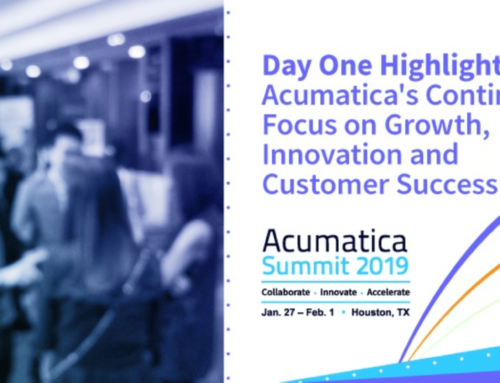By Susan Cosgrove, CFO, The Depository Trust & Clearing Corp.
When The Depository Trust & Clearing Corp. (DTCC) began a few years ago to explore using blockchain technology to transform how we serve the global financial markets, I initially focused on cost, benefits, and value creation. As the company’s CFO, that was my job.
But over time, I recognized that my unique vantage point and set of responsibilities allowed me to play a different and more impactful role as a champion of innovation.
Innovation can feel like a black hole with no guaranteed ROI, but CFOs are equipped to balance creativity with sound financial decision-making.
What changed for me was a realization that I could add greater value by thinking more broadly about these types of issues and by operating as an enterprise strategic leader with a vision for shaping the future direction of my organization.
While business heads and functional leaders are critical players in driving business strategy, CFOs have a perspective on our companies from a unique vantage point. We are in a position to drive a 360-degree view of our clients. As a result, we can ensure that investments are connected to outcomes and that the outcomes are focused on growth and an improved client experience.
This is bigger than our day-to day job of providing financial stewardship, managing the table stakes of financial planning, budgeting, reporting, and asset preservation.
There are countless areas where CFOs can play a broader role. One of the most impactful is leading innovation, both within their own organizations and across the enterprise. Of course, it also happens to be among the most challenging areas.
From the company’s perspective, innovation provides a competitive edge — a futuristic endeavor promising an ultimate return. From the CFO’s perspective, however, innovation can feel like the opposite: a potential black hole with no guaranteed ROI.
But innovation doesn’t need to be an either-or choice. CFOs are naturally equipped to find an equilibrium between promoting innovation and making “safe” financial decisions.
In some ways, it’s a lot like financial diversification. You have your “must-do” investments items, your flexible or “safe” ones, and those that are most risky or “fragile.” A well-balanced portfolio features a mix of all three that’s based on your risk tolerance and other factors. CFOs specialize in understanding these nuances to create a diversified portfolio, and we can bring that skill to other activities across the organization as well.
Over the years, I’ve learned several important lessons that have enabled me to play this unique and important role. Here are the three most important.
Embrace the Gray Zone
CFOs generally love order and precision. It’s a requirement of the job. But it can also be an occupational hazard if it hinders your ability to appreciate the many shades of gray that sit between the black-and-white world in which we typically prefer to operate.
Innovation is, by its nature, a murky concept. Its end goal can shift, its process can change directions, and its final destination can be unexpected. That’s the gray zone that a CFO must embrace.
At the same time, the CFO can exert influence by placing guardrails around projects to ensure they are clearly articulated and have measurable financial parameters. Think of it as an enterprise “sandbox” that’s designed to foster creativity within pre-defined rules and obligations.
This different way of thinking enables CFOs to stay true to their foremost mandate of protecting the business, while also putting themselves in a position to promote ideas that may have the potential to drive the organization in an entirely new and more profitable direction.
Achieving this balance is easier said than done. It requires CFOs to operate beyond their usual comfort zone by assuming greater flexibility while still maintaining the qualities of skepticism and conservatism that usually characterize their role. Without this flexibility, the CFO can neither understand the value of a particular innovation nor create the business case to support it.
Lead by Example
There’s a reason that certain phrases have been repeated countless times and become clichés: they are generally true. When it comes to CFOs and innovation, “lead by example” is the perfect example of this.
Traditionally, the CFO is the purse-holder with the power to green-light initiatives — the last hurdle at the beginning of a project. The CFO is generally expected to say “no” more than “yes.” That’s a preconception that should be eradicated.
CFOs have to position themselves as key stakeholders who are connected to every step of the innovation lifecycle. Rather than being viewed narrowly as a financial gatekeeper, CFOs can lead by example and position themselves as financial enablers, encouraging idea exploration and experimentation across the enterprise.
By shifting this dynamic, the CFO can act as a balanced voice between the board, executive management, and employees, delineating the “bottom line” and helping others visualize the “top line” of the business. These stakeholders understand that CFO’s have natural peripheral vision, which gives us insight into subtle signs of weakness that could impact the long-term value of investments.
It’s for this reason that the stakeholders gain trust when the CFO is at the table early on to promote innovation. In some cases, I’ve stepped in to provide air cover for business leaders who make positive cases for innovation or for an ambitious and creative departmental head.
Set the Pace of Innovation
CFOs are in the unique position of having among the most access and visibility across the organization. That gives us the opportunity to act as a key voice in defining what innovation should look like for the enterprise.
The deployment of financial resources is often as big a priority for CFOs as conservation and protection. We have an important perspective when it comes to evaluating innovation projects in a way that balances risk, opportunity, and return for the company.
As a rule of thumb, innovation should be grounded in solving a client problem and driving client value, but there are different approaches to how this can be achieved.
An “Agile” approach to development is appealing to CFOs because it allows for financial checkpoints at regular intervals. This means goal-setting for incremental progress, iterating toward proofs of concepts and getting constant feedback and buy-in from stakeholders.
That’s a vast improvement over the more traditional waterfall development lifecycle that doesn’t account for changes in client needs or shifting market dynamics. At the heart of organizational agility is the idea of failing fast, which encourages regular and frequent experimentation and ensures greater financial accountability.
When it comes to innovation, CFOs have a role uniquely suited to connecting the dots for the organization. CFOs should approach innovation with a sense of financial ownership and oversight, rather than rigid financial duty.
More than anything else, this will place us at the center of the innovation debate and position us as leaders driving positive organizational change.
Contact UdexxTech with any questions or to request a demonstration. We are here to give you a complete solution that can help transform your business, and increase revenue without increasing head count.






Leave A Comment
You must be logged in to post a comment.